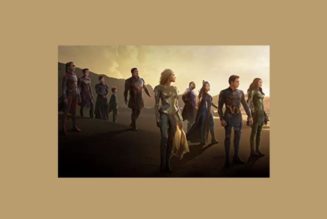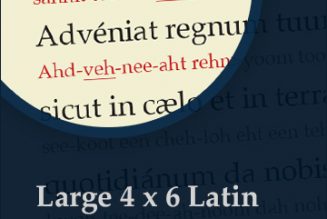 |
Six or seven centuries “are like an evening gone” when tracing the course of common sense, and so James Madison found no anachronism in conjuring the shades of Juvenal and Cleon, more than six centuries apart, to make a point about the perils of the right and wrong manipulation of human will. He asked with Juvenal, Quis custodiet ipsos custodes? The dilemma—“Who will guard the guardians?”—was the same dilemma that conflicted the Athenians during the Peloponnesian war when their better instincts for peace were compromised back in the fifth century B.C. by the seductive propaganda of Cleon. In this thesis, Madison was joined by Hamilton and Jay in The Federalist Papers, which were not expected to be the daily reading of farmers and merchants, but which could easily be understood by them and anyone bound by human nature. The matter at hand was “a rage for paper money, for abolition of debts, for an equal division of property.” That rage resulted in Shay’s Rebellion, and occasioned reflection on mob rule.
People can indulge contrary instincts to riot or to stay calm, because their will is free to do so. It is a principle denied by those who excuse moral anarchy by saying, “The devil made me do it.” That is the theological version of the behaviorist’s impulse to blame disordered behavior on external influences.
The rage now inflaming our cities is taking place between Pentecost and Trinity Sunday, although it is unlikely that those enraged are liturgically sensitive to that.
Celebration of the Most Holy Trinity follows Pentecost, because it is through the Holy Spirit that the sublime truth of God as Three in One expands the limits of human intelligence. The perfect harmony of the Triune God is like music whose sound frequency cannot be registered by unaided hearing, but it reverberates in the systematic order of nature, evident in those things we take for granted: health, happiness, and peace.
The peace that Christ gives is not a human fabrication (John 14:27). But as the Creator has entrusted the care of His creation to humans as His most complex creatures, we are responsible for promoting what Saint Augustine called the tranquilitas ordinis—the tranquility of order.
When the human mind works in harmony with the indications of the Holy Trinity, great things can be accomplished. For example, this past week two astronauts on the SpaceX craft docked perfectly in outer space. In a devilish irony, this was accompanied by simultaneous rioting in our streets, nihilistic in its destructiveness. As many of the bomb throwers and arsonists were middle-class suburbanites turned terrorist, this was a commentary on the collapse of family life and the abandonment of serious education in the schools, but essentially it was a specimen of the misuse of free will. Among “Millennials” grown dependent on forces that suborn conscience, who have never outgrown the need for a nanny, 70 percent favor socialism and one-third see something hopeful in communism. The desecration of Saint Patrick’s Cathedral with graffiti was not a display of adolescent erudition in the etymology of four-letter words rooted in German cognates and Old French. It was the screech of young people who for various reasons and from various sources had come to think that the Divine Word of Life is an incomprehensible whisper.
It is my lot to be the pastor of a parish in the middle of my city’s riots, just as New York has been an epicenter of the viral pandemic. Last night a shop next door was attacked. My parish has had a long experience of mobs, and the city records claim at least 34 riots of significance. The first pastor of my parish, who served for thirty-four years, intervened in the 1863 Draft Riots to save a Presbyterian church nearby from burning, an act that anticipated the modern ecumenical movement but with more practical benefits. His efforts were not permanent: later in his tenure, in 1873, the Orange Riots nearby saw 63 killed. Just days ago, I watched Macy’s department store being boarded up, to little effect since looters with impunity used crowbars to break in and steal jewelry and other expensive things in what much of the media said was an expression of their desire for social justice.
By the careful orchestration of mobs, and the systematic delivery of bricks and bats, it was clear that sinister plottings were at work, and that our President was right to call it terrorism. Not every authority was as acute. Our mayor, Bill de Blasio, who for years has functioned like one of Job’s unhelpful condolers, said he was proud of his daughter who was arrested as a rioter. Governor Andrew Cuomo said in a CNN interview: “Those were not thugs and looters. These are young people who still have idealism and want to make this nation better. And that’s a good instinct, and it should be encouraged.” From our hierarchs, there has been little in the way of prophecy, save for occasional virtue-signaling bromides. But that is the consequence of a gradual emasculation of their moral influence. So far, our prelates have not emulated the three archbishops of Paris—Denis-Auguste Affre, Marie-Dominique-Auguste Sibour, and Georges Darboy—who were killed respectively in 1848, 1857, and 1871. Affre and Darboy died in riots, while Sibour was shot by a cleric who thought celibacy was an imposition. All wore the same pectoral cross.
❧
This week, as a church burned behind him in Washington, D.C., one television reporter, reminiscent of Iraq’s famous “Baghdad Bob,” insisted that there was no burning and that the “protesters” were peaceful. The disinclination of so many governors, mayors, and other social guardians—along with the media—to acknowledge that their perception of reality is unreal brings to mind W.E.B. Du Bois and Walter Duranty calling Joseph Stalin “a great man” and “the greatest living statesman.” This is much like George Bernard Shaw, who added panegyrics on Mussolini and Hitler, and John Kenneth Galbraith’s immoderate flattery of Mao Zedong.
Those not averse to objective reality still have voices. The president of the New York State Troopers Police Benevolent Association, Thomas Mungeer, in a genuine protest, said that Governor Cuomo had given his men “zero support.” He explained to Cuomo: “Peaceful protesters do not arrive with hammers and Molotov cocktails, burn police cars, smash the windows of businesses or spray graffiti on St. Patrick’s Cathedral—criminal opportunists and vandals do. Peaceful protesters do not start fires in the streets or to businesses—arsonists do. Peaceful protesters do not gather en masse to openly disregard laws, create havoc and impede on the rights of the general public—rioters do.”
So there sounds once again, whether in New York, Philadelphia, Dallas, Seattle, or any other city where the acoustics of tradition can hear the voice of Joshua along the Jordan: “And if it is evil in your eyes to serve the Lord, choose this day whom you will serve…” This week, the contrast between astronauts and anarchists is a model of the blessings and dangers of free will. “For the flesh desires what is contrary to the Spirit, and the Spirit what is contrary to the flesh. They are in conflict with each other, so that you are not to do whatever you want” (Galatians 5:17). This simply and artlessly boils down to the choice between Christ and chaos, challenging the human mind to be rational or irrational. The human will is not bound to some arbitrary fate, but as John Milton put it: “The mind is its own place, and in itself can make a heaven of hell, a hell of heaven…”
It has been said one way or another that the gates of Hell are locked on the inside.
By choosing misrule, distorted reason prefers Hell to Heaven. The gates of Heaven are opened by choosing the tranquility of divine logic. “Behold, I stand at the door and knock. If any one hears my voice and opens the door, I will enter his house and dine with him, and he with me (Rev. 3:20).” To appropriate Rudyard Kipling, the destiny of souls depends on what people do with the “if” of their moral freedom: “If you can keep your head when all about you / Are losing theirs and blaming it on you.”

The Wit and Wisdom of
Father George Rutler
(Edward Short, ed.) is
available now from the
Sophia Institute Press.
Photo credit: Getty Images










